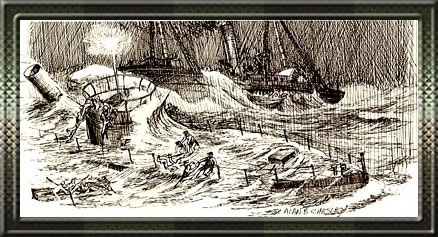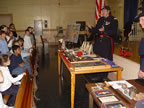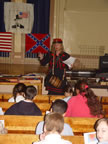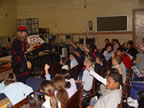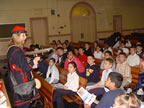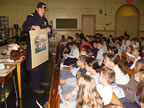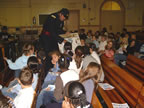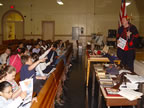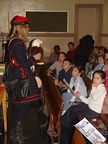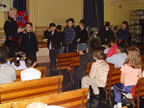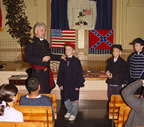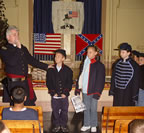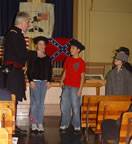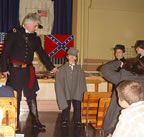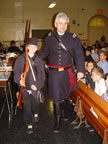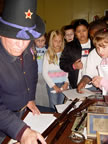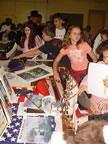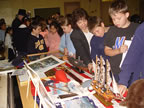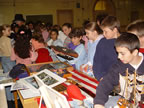The Greenpoint Monitor Museum "Road Show"
P.S. 110 - The Monitor School
October 21, 2005

P.S. 110 - THE MONITOR SCHOOL
GREENPOINT, BROOKLYN
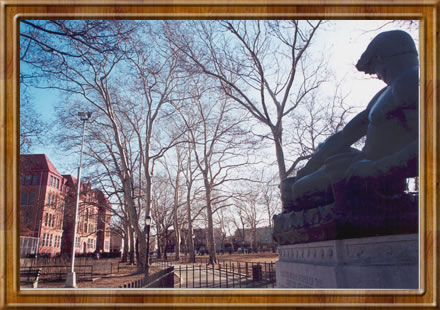
Neighbors of PS 110 "The Monitor School" on Monitor Street.
Monsignor McGolrick Park
and
The USS Monitor Monument (erected in 1938 to commemorate the
Battle of the Monitor and Merrimac, March 9, 1862, and
in memory of the men of the Monitor and its designer, John Ericsson.)
It is the work of the Sculptor, Antonio De Felippo.
The monument represents a bronze figure of a sailor straining at a hawser.
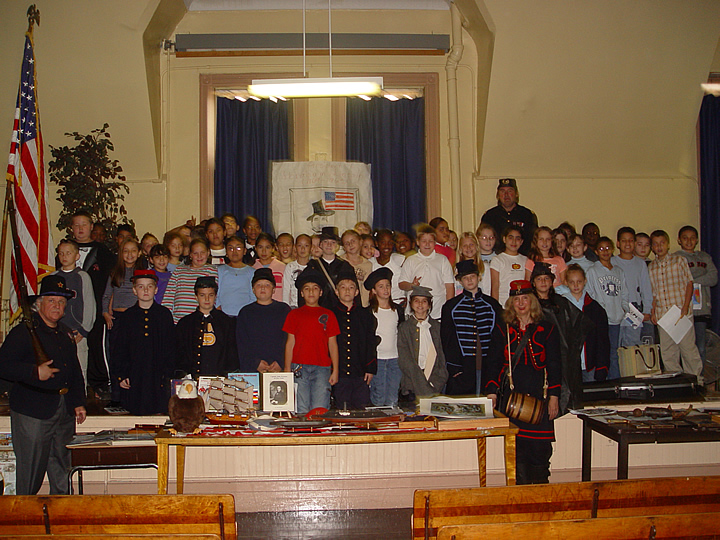
WELCOME FROM THE FIFTH GRADE.
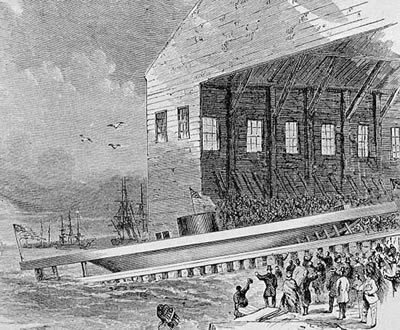
When John Ericsson came to New York in 1839,
the US Navy was still using wooden sailing ships
whose sails depended on the wind for power.
The wooden sailed frigate USS Constitution, which was
launched in 1797, was still in service and even
today can be seen in Boston, Massachusetts.
One of the last sailing frigates designed for the
United States Navy was the USS CONGRESS.
In the 1850's the US Navy included some wooden steam powered
frigates which also had auxiliary sails, but the older wind
powered frigates were still in use.
During the Civil War John Ericsson brought his plans for a
revolutionary type of ironclad warship to President Abraham Lincoln.
His new little warship was an ironclad. Its name was the USS Monitor.
It had a steam engine,
revolving turret with two 11 inch Dahlgren cannons,
propeller,
shallow draft and was very low to the water.
It was very different from the US Navy sailing frigates which
were
made of wood and some depended on the wind and their sails to
move.
They could not go in shallow water because they had
a deep draft.
He convinced President Abraham Lincoln to give the USS Monitor
a chance. John Ericsson came to Greenpoint to oversee the
construction of his new little warship at a company called
the
Continental Iron Works which was located at
Quay and West Streets and the East River in Greenpoint, Brooklyn.
Thomas Fitch Rowland was the owner of this company.
He and his workers built the USS Monitor.
Thomas Fitch Rowland and many of his workers who built
the USS Monitor
lived in Greenpoint.
The USS Monitor took 100 days to build and was launched on
January 30, 1862.
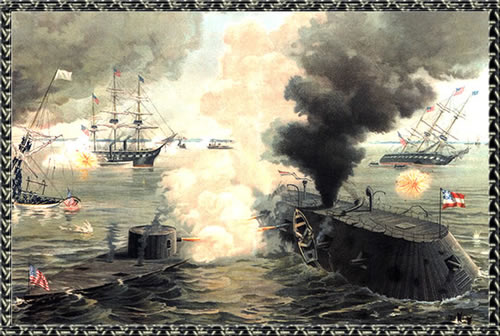
The USS Monitor left New York Harbor on March 6, 1862.
It arrived just in time to save the
US Navy at a naval battle
which was taking place at
Hampton Roads, Virginia.
Many of the US Navy's famous wooden
sailing frigates
were sunk during this battle including the USS CONGRESS.
They were being destroyed by a Confederate ironclad ship
called the CSS Virginia. Wood was no match to iron.
The CSS Virginia was once a
wooden Union Navy ship called the
USS Merrimac.
The Union burned the USS Merrimac so the
Confederates could not capture her but she did not burn below
the water line.
The USS Merrimac was steam powered and
had auxiliary sails.
The Confederates salvaged the Merrimac.
They removed her sails and covered her hull
with iron plate. She was then renamed the CSS Virginia
and began destroying the US Navy's wooden fleet.
The USS Monitor was ordered to save the US Navy sailing frigate USS Minnesota.
